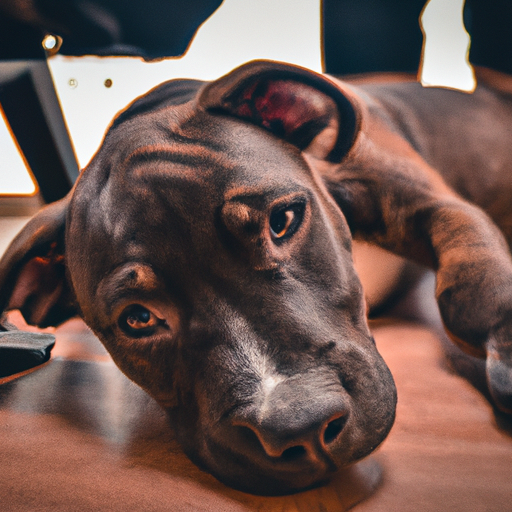Introduction to Natural Flea Remedies for Dogs

Hey there, fellow dog lover! If you’re like me, you’ve probably spent a small fortune on those chemical flea treatments. I mean, who wouldn’t want to keep those pesky critters off our furry friends, right? But let’s be honest, sometimes those treatments come with a side of guilt. You wonder about what you’re actually putting on your dog’s skin, don’t you? Well, I’ve got some good news. There are natural flea remedies for dogs that won’t break the bank or your heart.
It all started for me one sunny afternoon when I found myself knee-deep in research after spotting a suspicious scratch on Max, my golden retriever. I stumbled upon some home flea solutions that not only worked wonders but also made me feel a bit like a flea-fighting superhero. From lemon flea repellent for dogs to essential oils for dog fleas, there’s a whole treasure trove of natural solutions out there. And trust me, once you get the hang of it, it’s as satisfying as finding a twenty-dollar bill in an old coat pocket.
Understanding the Flea Life Cycle
Before we dive into these magical remedies, let’s take a moment to understand the enemy. Fleas aren’t just annoying, they’re persistent little buggers. Knowing the flea life cycle in dogs is like having the secret playbook of your biggest rival. It’s critical to tackling the problem effectively.
Here’s the lowdown: Fleas go through four stages—egg, larva, pupa, and adult. Most of them hang out in your home, not on your pet. So, while you’re busy trying to zap the adults, the eggs are plotting a takeover from your carpet or that cozy throw blanket on the couch. I learned this the hard way after battling what felt like a flea apocalypse in my living room. Understanding this cycle helps you target all stages, not just the flea party happening on your dog.
The Power of Lemon: A Simple Flea Repellent
Now, let’s talk lemons. Who knew this citrusy fruit could be a game-changer in flea control? I first heard about using lemon as a flea repellent from a fellow dog mom at the park. She swore by a lemon bath for fleas, and seeing her schnauzer flea-free and happy made me curious enough to try it myself.
All you need is a few lemons, water, and a bit of patience. Boil the lemons in water, let it cool, then give your dog a good rinse with it. It’s like a spa day for them, without the hefty bill. The citric acid in lemons is a natural flea deterrent. Plus, it leaves your pup smelling fresh and clean, like they’ve just returned from a day at the beach.
Remember, though, this isn’t a one-time fix. You’ll need to make it part of the routine. But trust me, once you see the results, it becomes less of a chore and more of a bonding moment with your pooch.
Essential Oils: Nature’s Flea Fighters
Ah, essential oils. They’re not just for diffusing during yoga sessions. I was skeptical at first, but these little bottles of magic have become my go-to for keeping fleas at bay. Essential oils for dog fleas like lavender, peppermint, and cedarwood have properties that fleas hate.
I remember the first time I tried lavender oil on Max. I was worried about the smell being overwhelming, but it turned out to be quite soothing—for both of us! Just mix a few drops with water, spritz it on your dog’s coat, and you’re good to go. It’s like giving your dog a mini spa treatment every day.
But a word of caution—always dilute essential oils and do a patch test first. Some dogs might have sensitivities, and we definitely don’t want that. Once you find the right balance, though, it’s smooth sailing.
Apple Cider Vinegar: A Household Solution
Let’s not forget the humble apple cider vinegar flea treatment. It’s been a staple in my household for ages. My grandma swore by it for just about everything, and turns out, she was onto something. Apple cider vinegar is an amazing home remedy for dogs with fleas.
Just mix it with water in a 1:1 ratio, and you’ve got yourself a natural flea repellent spray. The acidity in the vinegar creates an inhospitable environment for fleas. It was like finding a hidden gem in the back of your pantry. And the best part? It’s cheap and always available.
Applying it is straightforward. Give your dog a good spritz, avoiding the eyes and any open cuts. I always have a bottle ready by the door, so Max gets a quick spray before we head out for our walks. It’s become part of our routine, like grabbing the leash or checking the weather.
So, there you have it, a few natural flea remedies for dogs that have worked wonders for me and Max. They’re simple, effective, and let’s be real, they make you feel like a flea-fighting wizard. Thanks for sticking with me through this journey. I hope you find these tips as helpful as I did. Here’s to happy, flea-free pups!
Alright, folks, let’s dive into Part 2 of our journey on tackling those pesky fleas harassing our furry pals. You know, sometimes the answers are sitting right in our kitchen or garden, waiting for us to discover their magic. Here’s how we can put them to work and give Fido some relief.
The Power of Natural Oils
So, you’ve got coconut oil and olive oil in your pantry, right? Well, they aren’t just for cooking. These oils can be your dog’s new best friend. Rubbing a bit of coconut oil on your dog’s coat can make fleas slip right off. Plus, it’s safe if Fido decides to have a taste. Olive oil, too, can add shine to that fur while sending fleas packing. Now, I’ve been in the pet game for over two decades, and let me tell you, natural oils for dog fleas can be a lifesaver. Years back, my neighbor, Sarah, called me in a panic. Her golden retriever, Max, was scratching up a storm. We tried coconut oil, and lo and behold, those fleas didn’t stand a chance. It’s a simple trick, but boy, does it work wonders!
Herbal Flea Collars: Do They Work?
Ever wonder about those herbal flea collars you see on the shelves? These can be a game-changer. They’re infused with natural ingredients like eucalyptus and citronella. Unlike chemical collars, they’re gentle on your dog’s skin. You can even make one at home for just a few bucks. I’ve tried it, and let me tell ya, it works wonders. Picture this: a couple of years ago, I decided to make a DIY flea prevention for dogs. I grabbed some essential oils and an old bandana. A few drops of lavender and lemongrass oil later, I had Fido sporting his new herbal flea collar. He looked like a million bucks, and those fleas didn’t know what hit ’em. If you’re into flea treatment home remedies for dogs, this is a must-try.
Diatomaceous Earth: Nature’s Secret Weapon
Now, this one’s a bit of a surprise. Diatomaceous earth is like that unsung hero in the flea battle. You spread it around your home, and it dries out those fleas like nobody’s business. Just make sure to grab the food-grade type—not the stuff for pools—and sprinkle it where your dog hangs out. It’s cheap and effective. I remember the first time I used diatomaceous earth for fleas on dogs. My buddy Tom had a Labrador, Charlie, who’d brought home a whole flea circus after a romp in the park. We dusted some DE around his favorite napping spots, and soon enough, it was bye-bye fleas. It’s astonishing how something so simple can pack such a punch.
Apple Cider Vinegar: A Kitchen Staple for Fleas
Who would’ve thought that apple cider vinegar, the champion of home remedies, could help fight fleas? A diluted mix sprayed on your dog can deter fleas. It’s like giving them a good ol’ vinegar bath without the fuss. And hey, it’s right there next to your salad dressing. I once had a chat with an old-timer at the local dog park. He swore by apple cider vinegar flea treatment for dogs. He’d mix it with some water and give his pup a quick spritz before their walks. I was skeptical at first, but after trying it on my own dog, I was sold. The fleas seemed to lose interest, and my dog smelled like a salad. Win-win, right?
Essential Oils: Safety First
Essential oils can be tricky. Sure, they smell heavenly, but not all are dog-friendly. Lavender and lemongrass can help keep fleas away, but always mix with a carrier oil and test a small spot first. Safety’s the name of the game here. You don’t want to swap one problem for another. A couple of years back, I learned this the hard way. I was so excited about using essential oils safe for dogs fleas that I got a bit carried away. I didn’t dilute the oil enough, and my poor pooch ended up with a rash. Lesson learned, always test first! But once you get the hang of it, essential oils can be a fantastic addition to your home remedy toolkit.
So, there you have it. A few easy, budget-friendly ways to keep those fleas at bay. Remember, you’re not alone in this fight. Thanks for sticking with me today. Give those techniques a whirl, and here’s to a flea-free home!
Prevention Tips: Keeping Fleas at Bay
Alright folks, let’s dive right into this. If you’ve got a furry friend, you know fleas are like that pesky neighbor who just won’t take a hint. They show up uninvited and cause all sorts of chaos. But, fret not, because there are ways to keep these little nuisances away from your dog with some good ol’ natural flea prevention for dogs. It’s all about playing the long game here, folks.
First things first, cleanliness is king. Regularly washing your dog’s bedding and vacuuming your home can do wonders. Fleas love a dirty house—don’t give them the satisfaction. Plus, you can whip up a homemade flea repellent for dogs using stuff you probably have in your kitchen. A mixture of apple cider vinegar and water can be sprayed on your dog’s coat, creating a natural shield against fleas. I know, it sounds too simple, but sometimes the simplest solutions are the best.
Then there’s the power of herbs. Yup, you heard me right. Planting some flea-repelling plants like lavender and mint around your yard can be a game-changer. These plants act like natural flea deterrents, and they smell pretty darn good too. Also, giving your pooch a regular bath with a gentle, flea-repelling shampoo can nip those infestations in the bud. Remember, folks, consistency is key when it comes to natural flea prevention for dogs.
When to See a Vet: Recognizing Serious Cases
Now, sometimes, despite your best efforts, those fleas are just relentless. That’s when you’ve got to know the signs your dog needs a vet for fleas. Let’s be real, nobody wants to fork out for a vet visit unless it’s absolutely necessary. But if your dog starts losing hair, has irritated skin, or you see flea dirt—those are red flags.
Watch out for any signs of anemia, especially in small dogs and puppies. Fleas can drain a lot more than just your patience. If your dog seems lethargic or has pale gums, it’s time to call the vet for fleas. Trust me, it’s better to be safe than sorry. Your vet can provide treatments that are stronger and more immediate than home remedies.
Don’t ignore persistent scratching either. If your pooch just can’t stop itching, it might be a sign of an allergic reaction or secondary infection. These cases definitely warrant a vet’s attention. It’s kind of like when you try to fix something at home and end up calling a professional anyway—sometimes you just gotta admit you need help.
Stories from Dog Owners: Real-Life Remedies
Alright, let’s switch gears and talk about some real-life remedies. Dog owners share flea remedies that have worked wonders for them, and these stories can be as comforting as a cup of hot cocoa on a cold day.
Take Sarah, for instance. She swears by her homemade flea repellent for dogs. After battling fleas for months, she concocted a blend of lemon juice, rosemary, and water. She sprays it on her dog before every walk. Her dog, Max, hasn’t scratched since. And then there’s Tom, who uses diatomaceous earth. He sprinkles it on his carpets and lets it sit for a few hours before vacuuming. Fleas don’t stand a chance.
Then there’s Linda, a friend of mine, who mixes coconut oil into her dog’s diet. Not only did it make her dog’s coat shinier, but it also seemed to deter fleas. These success stories in flea treatment are a testament to the fact that sometimes the best solutions are the ones shared over a backyard fence.
DIY Flea-Repellent Recipes
Now, let’s get those hands a little dirty. Making your own flea repellent isn’t rocket science. In fact, it can be as easy as pie. One popular recipe involves mixing equal parts water and apple cider vinegar. Add a few drops of lavender or cedar oil, and you’ve got yourself a flea-fighting potion.
Another tried-and-true method is creating a citrus spray. Boil some slices of lemon, let it cool, and then spritz it on your dog’s fur. It’s refreshing and effective. For those who love a bit of spice, you can even dab a little bit of lemon oil on your dog’s collar. It’s like giving fleas a one-way ticket out of town.
But hey, remember to always do a patch test first. You don’t want to trade one problem for another, right? And while these homemade flea repellents are great, they’re part of a larger strategy. They’re not a one-stop-shop solution but rather another tool in your flea-busting toolkit.
Encouragement and Next Steps: A Flea-Free Future
So, we’ve talked about a lot today. Fleas, those little buggers, can feel like a never-ending battle. But with these tips and tricks, you’re well on your way to a flea-free future. Remember, prevention is just as important as treatment. Keep your home clean, use natural flea prevention for dogs, and stay vigilant.
If things get out of hand, don’t hesitate to call the vet. It’s always better to catch these things early. And don’t forget, you’re not alone in this. There are countless other dog lovers out there battling the same pests. Sharing stories and remedies can be incredibly empowering.
So, thanks for sticking around and taking the time to learn about home remedies for dogs with fleas. You’re doing a great job, and your four-legged friend is lucky to have you. Keep your chin up and stay optimistic—you’re on the right path. Here’s to many more flea-free days ahead!
Quick Takeaways:
Hey there, dog lovers! Fleas aren’t just a nuisance; they’re downright pesky little critters. But guess what? You don’t always need to rush to the vet or the pet store for the latest chemical treatment. Sometimes, the best home remedy for dogs with fleas is already lurking in your pantry or garden. Natural flea remedies for dogs can be just as effective without the harsh chemicals.
Start with natural oils like coconut and olive oil. They aren’t just good for cooking but can also help make fleas slip right off your pup’s coat. And if you’re into DIY, you can whip up a herbal flea collar at home. Eucalyptus and citronella-infused collars can be a gentle solution.
Diatomaceous earth is another secret weapon. Sprinkle it around your home, and watch it dry out fleas like magic. Just make sure it’s food-grade! And don’t forget apple cider vinegar; a simple spray of this diluted kitchen staple can be a game-changer.
Essential oils are a bit like playing with fire. They smell amazing, but make sure they’re safe for dogs. Lavender and lemongrass are pretty effective but always use a carrier oil. Test it on a small spot first to keep things safe.
So, there you have it. A few home flea solutions that are as easy on your wallet as they are on your dog. Give ’em a try, and say goodbye to those pesky fleas!
FAQs:
1. *What’s a good home remedy for dogs with fleas?*
A great home remedy for dogs with fleas is a lemon flea repellent. Slice a lemon, boil it in water, and let it steep overnight. Use this solution as a spray on your dog’s fur. It’s a natural way to repel fleas without harsh chemicals.
2. *Can essential oils be used for dog fleas?*
Yes, essential oils for dog fleas can work wonders, but be cautious. Lavender and lemongrass oils are often safe when properly diluted with a carrier oil. Always test a small area first to ensure your dog doesn’t have a reaction.
3. *How does the flea life cycle in dogs affect treatment?*
Understanding the flea life cycle in dogs is key to effective treatment. Fleas lay eggs that fall into your home environment. So, while you’re treating your dog, don’t forget to clean their bedding and vacuum regularly to break the cycle.
4. *Is apple cider vinegar a good flea treatment for dogs?*
Apple cider vinegar flea treatment for dogs is a popular home remedy. Mix equal parts of water and vinegar, then spray it on your dog’s coat. It’s a natural way to deter fleas, but it won’t kill them, so use it as part of a broader flea control strategy.
5. *What’s the deal with diatomaceous earth for fleas on dogs?*
Diatomaceous earth is great for fleas on dogs. It’s a powder that dries out fleas, effectively killing them. Just make sure you use food-grade diatomaceous earth and apply it to areas where your dog spends time, like bedding or favorite napping spots.
Conclusion:
And there you have it, folks. Fleas don’t stand a chance against our arsenal of home remedies for dogs with fleas. From the lemon bath for fleas to the herbal flea collars for dogs, these solutions are more than just easy on the pocket—they’re kind to our canine companions. It’s about finding what works best for you and your furry friend.
Remember, patience is key. These natural remedies might take a little time, but they’re a great way to avoid harsh chemicals. Plus, they’re a chance to bond with your pet. Keep an eye on their reactions, and always prioritize their comfort and health.
Thanks for sticking around and exploring these options with me. You’re doing a great job keeping your pup happy and healthy. Here’s to a flea-free future with tails wagging and happy adventures. Go on, give those fleas the boot, and enjoy the journey!
References:
1. https://www.ellevetsciences.com/blog/home-remedies-for-fleas-on-dog/
2. https://wearethecure.org/natural-flea-treatments-for-dogs/
3. https://www.akcpetinsurance.com/blog/natural-flea-and-tick-prevention
4. https://nativepet.com/blogs/health/home-remedies-for-fleas-on-dogs
5. https://jetpetresort.com/blog/dog-care/30-ways-to-naturally-prevent-and-get-rid-of-fleas-on-dogs/
Our solution eradicates fleas on contact without harmful chemicals, ensuring a safe environment for your pets and family. Easy to use and highly effective, SayByeBugs helps you maintain a flea-free home. Learn more and order today at SayByeBugs.com





